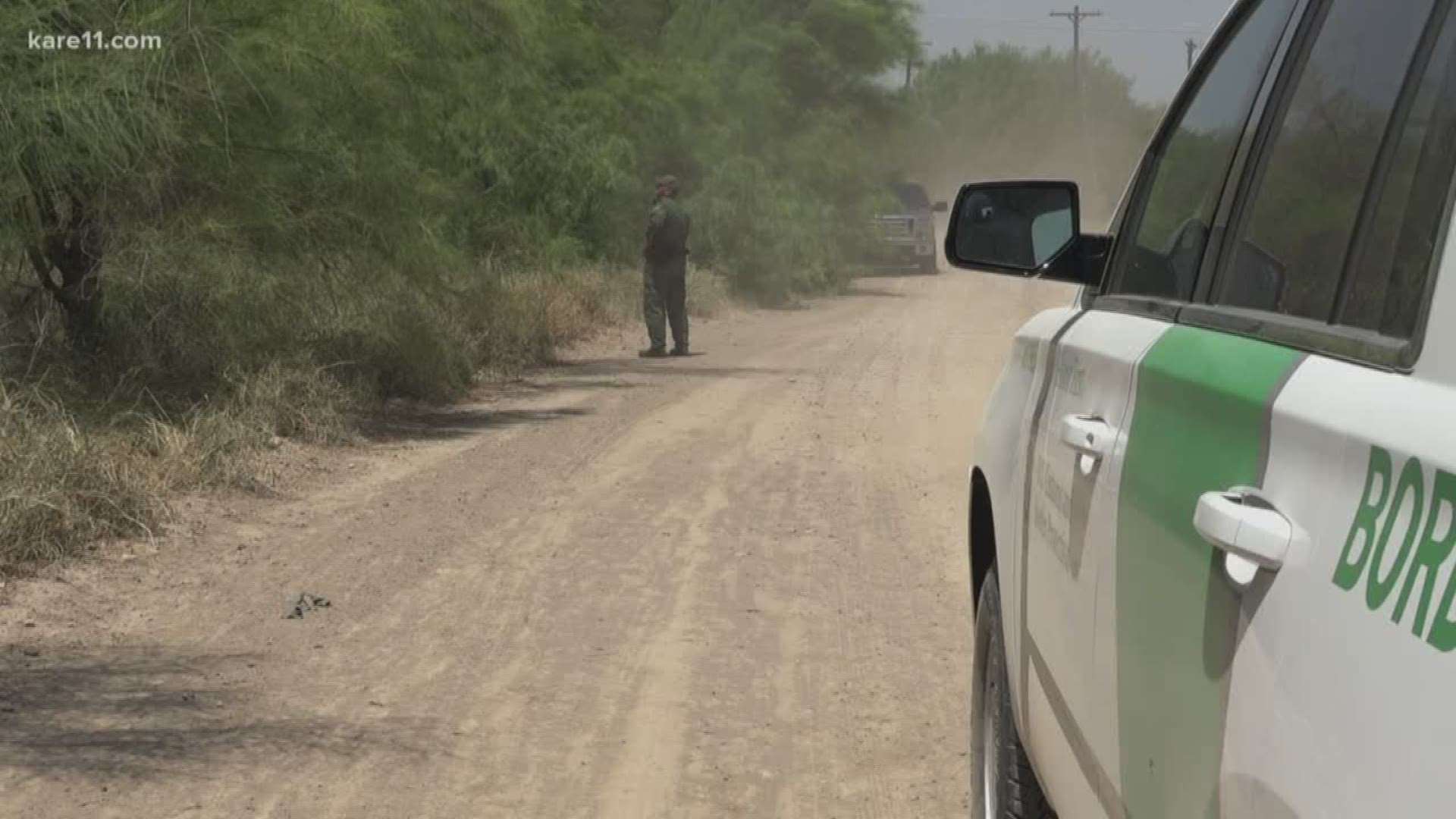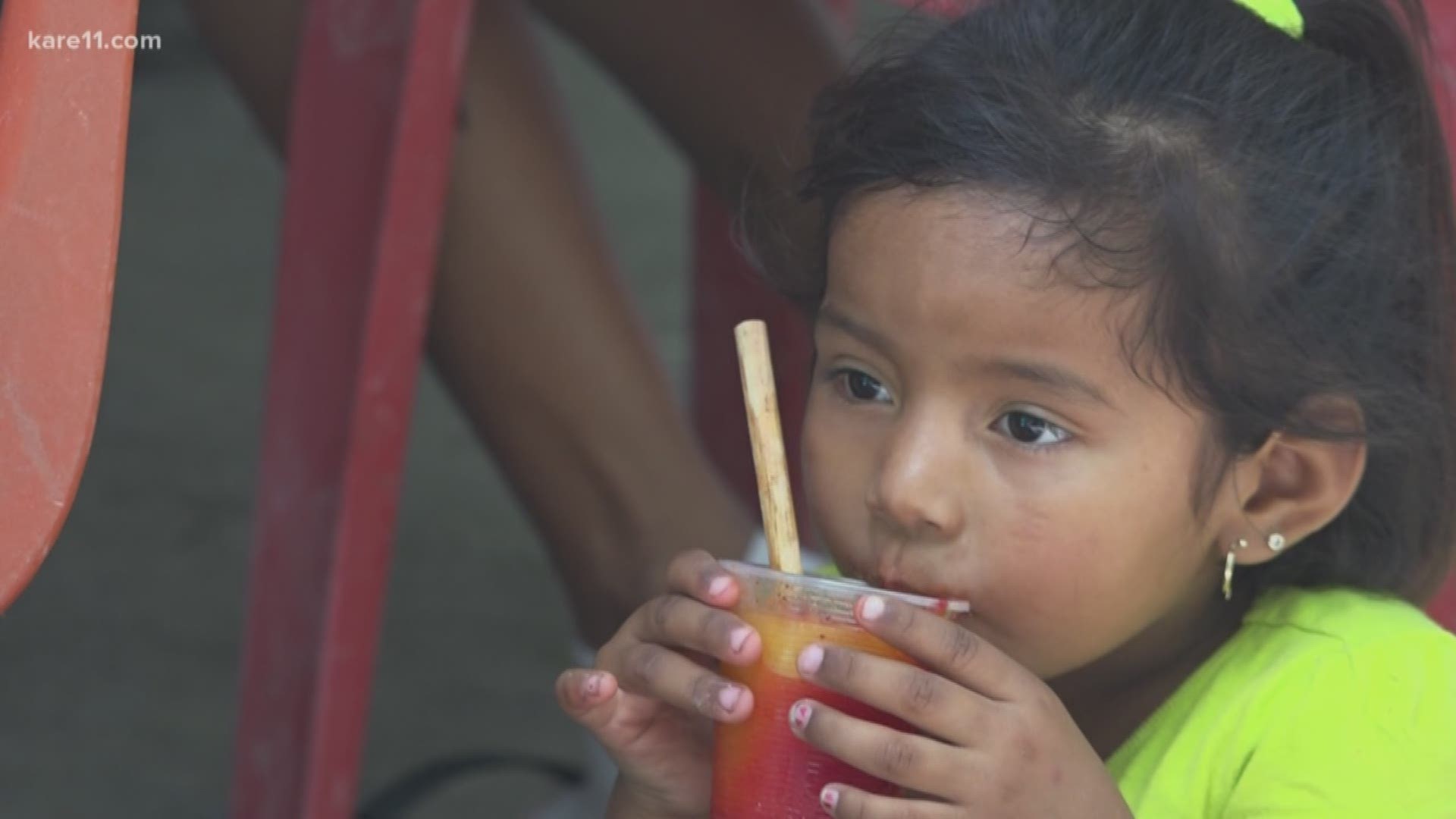HARLINGEN, Texas — The immigration debate divides Americans as clearly as a section of wall cuts across a cotton field in Texas.
There’s no question people of differing political parties, ideologies or beliefs disagree on what caused – and what could solve – the humanitarian crisis at the southern border.
And while Minnesota is more than a thousand miles removed from the epicenter of the debate, our community maintains a connection to this important question in our country. It’s why KARE 11’s Karla Hult traveled to the border with the Minnesota-based Alight to hear directly from those on the front line.
“A national border security mission”
The thermometer reads 103 degrees, and there’s not a cloud in the sky to block the unrelenting sun. Under these typical Texan conditions, U.S. Customs and Border Protection Agent Hermann Rivera begins patrolling the area just a few miles north of the U.S.-Mexican border. And as he drives, he begins sharing his perspective.
His introductions and autobiography are brief – “I’m originally from Texas. I’ve been here locally for a good portion of my life, so this is home,” – before he begins reciting department statistics.
“Rio Grande Valley sector for this fiscal year is on pace to double last year’s numbers. So last year, River Valley sector apprehended just over 162,000 people, altogether. This year, we’re on pace to double that, which is quite a significant number,” Rivera said, referring to CBP statistics that are updated monthly.
RELATED: Minnesota At The Border: two opposing perspectives from the front line at the southern border
“The sector itself averages about a thousand people a day,” Rivera says about the RGV sector that includes 277 miles of river border, 55 miles of which also has fencing.
It’s not long before this overview is interrupted by radio traffic that grows louder and more excited.
“I think we got two birds here,” says a voice over the radio into the CBP vehicle.
“We’re going to a location where they apprehended some people,” Rivera explains as he turns the car around.
Within minutes, we hear the whirring hum and see the unmistakable outline of a Black Hawk helicopter hovering over a thick patch of woods. The helicopter is flying above where the trees meet a dirt road, so dust covers the vehicles and people also rushing to respond to the scene.
KARE 11’s cameras rolled as other agents – those gathered on the ground – soon walked out of the woods, escorting three young adults. And while two of the three were minors who were not allowed to talk on camera, the third is a 21-year-old woman from Guatemala.
Through an interpreter, Beverly explained she was pregnant and traveling alone after her husband was murdered in Guatemala.
“She said she’s had water, but it’s been a few days since she’s eaten,” the interpreter translated.
Her story of a difficult journey may be familiar. But Beverly, as an adult traveling alone, contradicts what has become a migration trend. Agents say the majority of those crossing the border today do so as “family units,” parents traveling with children.
The surge in families and children
“What we apprehend right now is more of the family units, the people who, for instance, come with a mother and a child, or a father and a child,” Rivera said about the change in migration patterns.
According to the CBP, the RGV sector alone has seen a 305 percent increase in the number of apprehensions of families at the border. Rivera and other agents KARE 11 spoke with say that surge has resulted in overcrowded detention centers and overwhelmed agents.
“At times, we are left vulnerable because we’re having to tend to these family units that we’re getting in sheer volume that’s staggering. And the area is left vulnerable, and we know that we’re missing people,” Rivera said about the need for agents to occasionally leave their posts to process large groups that include families.
“And smugglers know this. The criminal organizations know this. So they take advantage of the fact that it’s left vulnerable,” he said.
As for the ongoing and strong criticism of the conditions at border detention centers, Rivera said that’s also a result of an unsustainable system.
“That’s the main thing, border patrol is not in the long-term holding business,” he said about having to respond to and accommodate the influx.
But… why?
According to the agents interviewed by KARE 11 at the border, the current trend relates to an alleged “loophole” within U.S. immigration policies. They argue that time limits and conditions of care for children crossing the border complicates their work, as parents – with advice from opportunistic smugglers – seek to take advantage of the policy.
The Flores Case
KARE 11 did some independent research into the legal case in question. It stems from a 1985 lawsuit involving a 15-year-old girl, Jenny Lisette Flores, who had experienced what was argued as “substandard conditions.” Later, the government agreed to new standards under a 1997 decision. And in 2015, a judge further ruled that the standards of care and time limit applied to all children – not just crossing the border by themselves.
An immigration attorney’s take
So after hearing the CBP perspective on what’s contributing to the surge, KARE 11 sat down with prominent immigration attorney Jodi Goodwin in her law offices in Harlingen, Texas.
Immediately, Goodwin challenged the CBP – and the administration’s – argument.
“I don’t agree with an explanation that there is some loophole in the law that would indicate that if someone comes in with their child that they’ll somehow be released,” Goodwin said, adding, “If you come in with a child whether you present yourself at a port of entry, or you come across the river and you get apprehended by immigration authorities after you’ve crossed the river, they absolutely can detain you. That’s what the law says.”
Instead, the attorney – whose desk was piled with files from pending cases – said she continues to represent clients who’ve been separated from their children. She argues the border backlog is due in part to a system in constant chaos.
“Because of the complexity, because of the curveballs, because of changing decades of established case law with the stroke of a political pen,” she said.
And she continued: “There are so many more migrants dealing with an ever-changing sometimes daily-changing system and rules of the game, that it’s difficult for them to be able to navigate it.”
Goodwin further concludes that the crisis started far south of our border – in Central American countries that continue to need U.S. economic aid.
“There is a fundamental failure in terms of effective governments not only within Central America but also within other countries around the world,” she said.
A humanitarian crisis
And so we have two perspectives on what caused – and what could solve – the immigration debate. But on one point both sides agree: a humanitarian crisis exists, with people in need showing up at our southern border.
The Minnesota-based Alight, formerly the American Refugee Committee, continues to respond to that crisis by working alongside Catholic Sisters and others in the community. And to learn more about how you can support their work click here.


